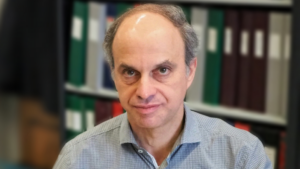
Patent Ineligibility Initiative
By Ute Kilger, Patent Attorney, European Patent and Trade Mark Attorney, Boehmert & Boehmert Anwaltspartnerschaft mbB The Life Science Industry needs a strong, predictable, reliable patent system that incentivizes innovations in order to bring new drugs and diagnostics to the patient, drives innovations and prevents patent abuse. The US Supreme Court has rendered a series of decisions about patent eligibility (§101 of the Patent Act) that make entire parts of Life Science Technology ineligible for patent protection and/or renders granted patents unenforceable. This makes the patent system unreliable and unpredictable and averse to investment into innovations. Change will need to come from Congress. Recently, a group of Senators and Representatives of the US Congress released the draft text of a bipartisan, bicameral proposal to reform Section 101 of the Patent Act. The initiative to reform Section 101 of the Patent Act needs political support from all life science stakeholders including from those in Biotech.
1. Common Grounds of Understanding the Importance of the Patent System for the Life Science Industry
Patents are just one tool to drive innovative business and investments into life science solutions since they are one of several tools to secure return-on-investment into innovative business. In most life science areas no-one would invest into such innovations without reliable patent protection being available – even in view of strong regulatory tools.
Innovative diagnostic and therapeutic companies need useful patent protection to be available. Useful patent protection is suitable to keep competitors away from a certain business area for a certain period of time in order to secure reasonable return-on-investment before generics and/or biosimilars enter the market.
Misuse of the patent shall be prohibited, such misuse being patent thickets or making patents not accessible to invalidation proceedings by assigning it to tribes. It is healthy for the life science eco system to have an entry of generics and biosimilars onto the market after a reasonable period of time.
Important criteria for the patent system are: What helps the patient? What will drive innovation? In order to regulate this ecosystem and in order make sure the patent system fulfils these criteria is not misused to unjustified monopoly reasonable measures must exist. These measures include securing high quality grant procedures and there are a number of post-grant options for addressing the dynamics of patent monopolies. These include experimental use exemptions, compulsory licensing, and government use.
There is, however, one measure that was invented by the US Supreme Court to limit allegedly unjustified monopolies that erodes the patent system in a harmful manner and is, in particular, harming Life Science Industry. It is the Law of Nature Doctrine.
2. The Law of Nature Doctrine of the Supreme Court harms the Life Science Industry
The current US Supreme Court established a law of nature doctrine in decisions Mayo v. Prometheus and AMP v. Myriad Genetic that renders entire parts of Life Science Technology ineligible to patent protection or renders granted patents unenforceable. This not only harms the currently directly affected industry like the diagnostic industry but potentially poisons patenting in the entire life science area.
The Myriad decision has been read as imposing a bar to patenting all natural products. It possibly also bars the patentability of all products that duplicate (or come close to duplicating) materials found in nature. In Prometheus, the US Supreme Court also barred patents on diagnostic tests that rely on correlations among natural phenomena on the grounds that the relationships constitute principles of nature. There is growing suspicion that it will be difficult to use the patent system to encourage the development of a whole range of therapies and research intermediates useful in developing new therapeutic interventions. These include proteins, kinases, colony-stimulating factors (such as growth factors), peptides, antibodies, viruses, and venoms. It also means that advances in personalized medicine, which hold significant promise for curing an array of diseases, may no longer be patent-eligible. Significantly, such advances could include companion diagnostics i.e. information about whether a particular patient will benefit from a proposed therapy. Unlike earlier forays into genomics, which were centered at university and government laboratories, these new approaches are mainly the province of commercial diagnostic and pharmaceutical companies, which traditionally rely heavily on strong intellectual property protection to earn profits on their investments. (see e.g. Dreyfuss et al Journal of Law and the Biosciences, 550589, oct 2018).
The law of nature doctrine may potentially broadly prevent useful patent protection for life science patents in the future. (see e.g. in this regard FEDERAL COURT OF AUSTRALIA D’Arcy v Myriad Genetics Inc [2014] FCAFC 115, emphasize added):
Adopting the reasoning of Frankfurter J in Funk Brothers Seed Company v Kalo Inoculant Company, 333 US 127 (1948), it confuses the issue to use such terms as the work of nature and the laws of nature. It is not decisive or helpful to point out that the suggestion is that nature, in its newly ascertained aspect, be allowed to work in its own way. Expressions such as the work of nature or the laws of nature could fairly be employed to challenge almost any patent.
This view is confirmed by the latest decisions of the Federal Circuit concerning diagnostic methods. On February 6, 2019, the Federal Circuit issued its latest opinion on patentable subject matter under 35 U.S.C. § 101 in Athena Diagnostics, Inc. v. Mayo Collaborative Servs., LLC, No. 2017-2508, slip. Op. (Fed. Cir. Feb. 6, 2019):
The patent claimed methods of diagnosing conditions relating to a protein called muscle-specific tyrosine kinase (MuSK) by contacting MuSK with a patient’s bodily fluids and performing immunoprecipitation or enzyme-linked immunosorbent assay (ELISA) to detect autoantibodies to MuSK in the bodily fluids. The premise of the patent was that artificially labeled MuSK protein would form complexes with any autoantibodies to MuSK in a sample of bodily fluids, thus allowing scientists to detect the autoantibodies, which are found in some patients with myasthenia gravis. Myasthenia gravis is a neurological disorder characterized by muscle weakness and symptoms such as drooping eyelids, double vision, and slurred speech.
Athena, the exclusive licensee, sued Mayo for infringing the patent in the District of Massachusetts. Mayo moved to dismiss the complaint, arguing that the asserted claims were invalid because they were not eligible for patent protection (§101). The district court granted the motion, ruling that the asserted claims were invalid under the two-part test for § 101 established in Mayo Collaborative Services v. Prometheus Laboratories, Inc., 566 U.S. 66 (2012).
The CAFC affirmed the decision to invalidate the patent. Judge Lourie wrote for the majority in this split decision, expressing some regret but affirming an order invalidating a diagnostic patent involving proteins. Judge Newman dissented, voicing a concern that § 101 jurisprudence has become counterproductive to the goals of patent law.
This Athena decision is in line with earlier court decisions to invalidate granted diagnostic patents under the new law of nature doctrine: Mayo, Ariosa, and Cleveland Clinic.
This means it will either be impossible to obtain useful patent protection for the above-mentioned innovations in the life science industry and/or diagnostic and pharmaceutical companies since they cannot rely anymore on their granted patents as such patents may be invalidated later on in the courts. This situation creates tremendous business uncertainty for innovative businesses. It is detrimental for the innovative life science industry and will disincentivize investors.
What to do about it?
As the US Supreme Court, the driver of these decisions, is unlikely to overrule its relatively recent § 101 decisions in the near future, change, if any, will likely need to come from Congress.
On 22 May, 2019 a group of Senators and Representatives of the US Congress released the draft text of a bipartisan, bicameral proposal to reform Section 101 of the Patent Act. Senate Hearings on the topic had been held on 4, 5, and 11 June. The draft text states that the provisions of 101 shall be construed in favor of eligibility. Further: No implicit or other judicially created exceptions to subject matter eligibility, including abstract ideas,’ laws of nature,’ or natural phenomena,’ shall be used to determine patent eligibility under section 101 and all cases establishing or interpreting those exceptions to eligibility are hereby abrogated.
During the first of the three scheduled Senate hearings Paul Michel, Former Chief Judge of the Court of Appeals for the Federal Circuit pointed out. I’ve spent 22 years on the Federal Circuit and nine years since dealing with patent cases and I cannot predict in a given case whether eligibility will be found or not found, Judge Michel said. If I can’t do it, how can bankers, venture capitalists, business executives and all the other players in the system make reliable predictions and sensible decisions?
Todd Dickinson and David Kappos, the two former Directors of the U.S. Patent and Trademark Office appearing on the first panel, supported the proposed Section 101 draft. Professor Adam Mossoff of the Antonin Scalia Law School, George Mason University reminded the panel during the hearing that, between 2014 and 2018, 692 court decisions have applied the Alice/Mayo framework, with a total invalidation rate of 65.8%; the CAFC has invalidated patents in 87.5% of its decisions on appeal; and the Patent Trial and Appeal Board (PTAB) has applied the Alice/Mayo framework in the covered business method review program and invalidated patents in 97.9% of its final decisions. There are now examination units at the USPTO reviewing applications for inventions in e-commerce, healthcare, and business cryptology that have rejection rates well over 80% and some over 90%, Mossoff said, adding that these are not bad patents, but groundbreaking medical diagnostic tests for cancer, diabetes, heart disease, and prenatal care.
There are strong stakeholders that are lobbying heavily against the §101 reform. These include big high-tech companies as it seems that an erosion of the patent system may be in their interest. The Internet Association’s members include Amazon, Facebook, Google, etc. and will argue against reform. Organizations like the Electronic Frontier Foundation (EFF) that claims to be the leading non-profit organization defending civil liberties in the digital field will argue against the reform. Moss from EFF said:
Who will benefit most from the proposal? Companies that make money from aggressively licensing and litigating patents, especially in the fast-growing fields of artificial intelligence and medical diagnostics. And, of course, the patent lawyers and law firms who make money representing them. Not to mention, patent trolls.
There are patient groups that lobby against reform as there is the belief that diagnostic tests and drugs will be available at lower prices if there is no patent protection.
The initiative to reform Section 101 of the Patent Act needs political support from all life science stakeholders including from those in Biotech.


 FDA
FDA University of Geneva
University of Geneva MRM Health NV
MRM Health NV